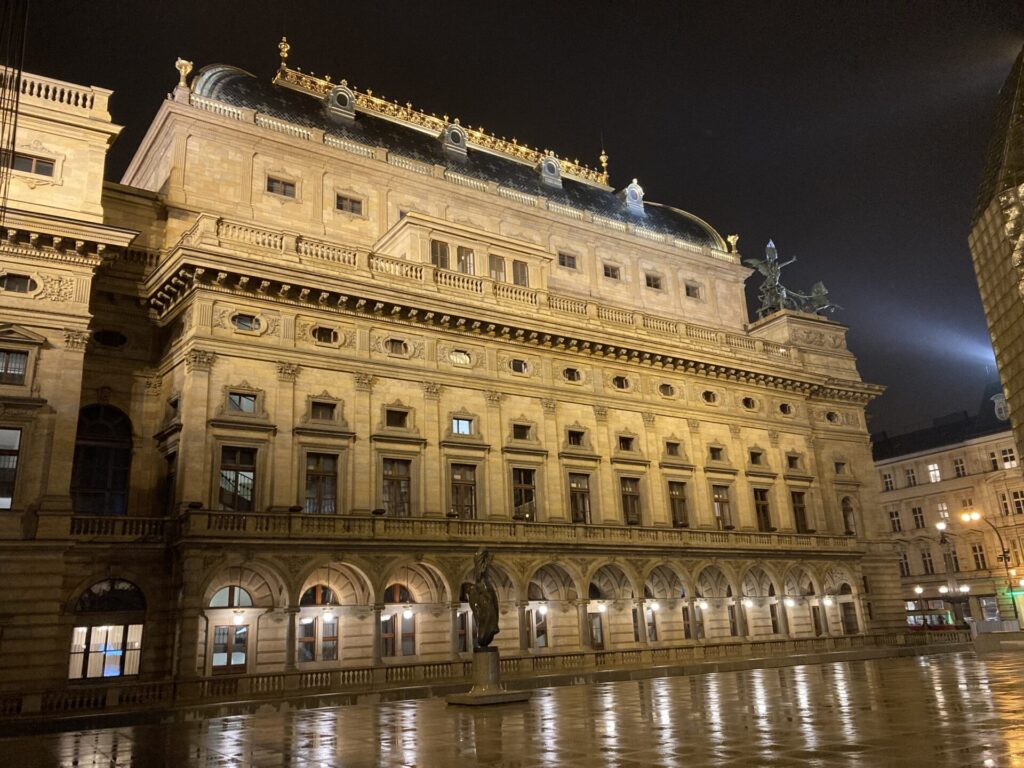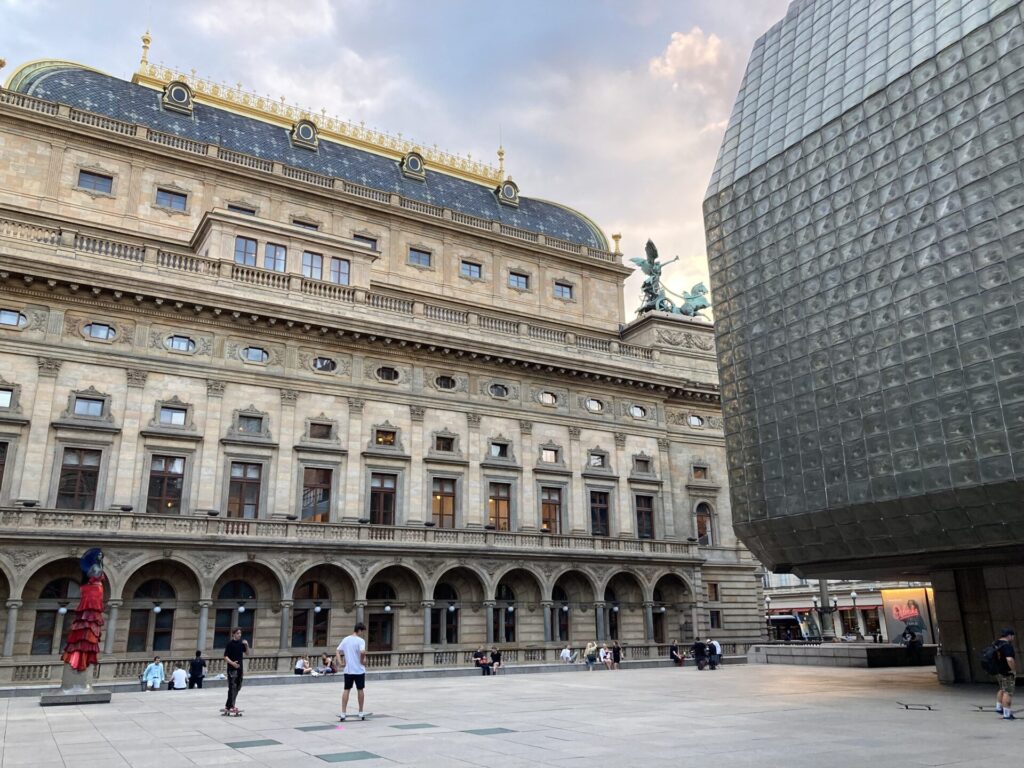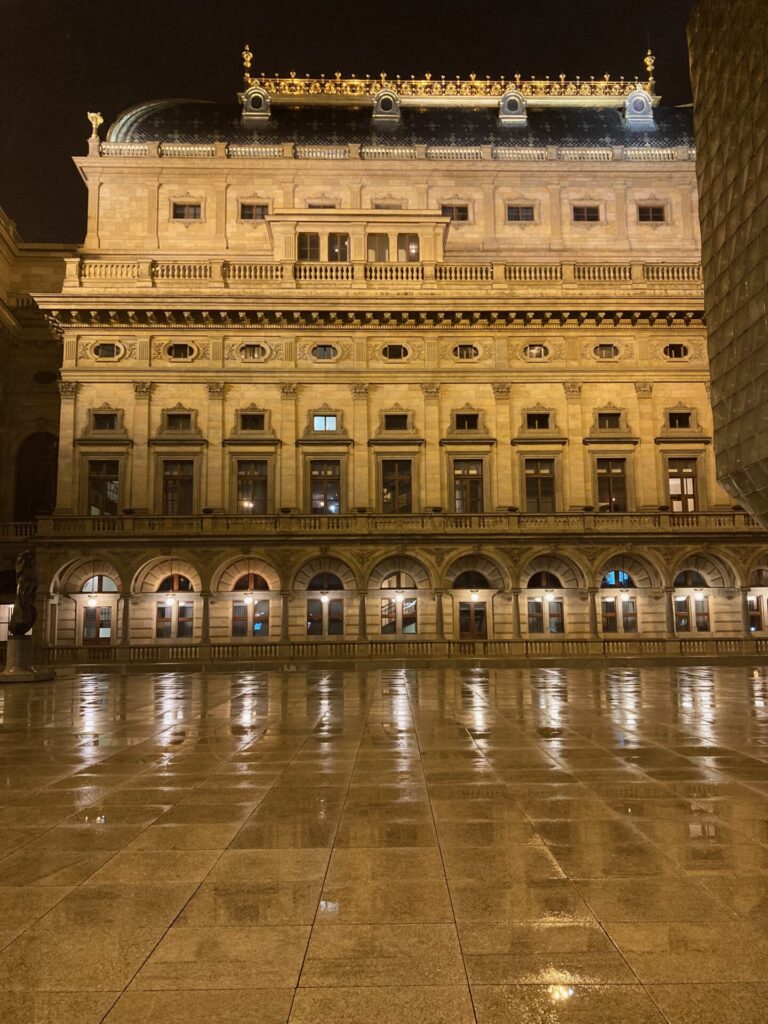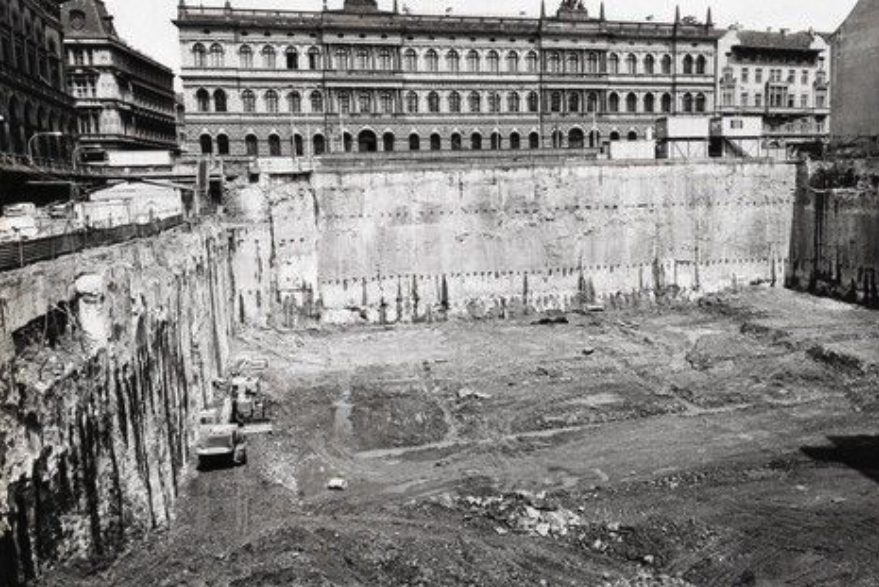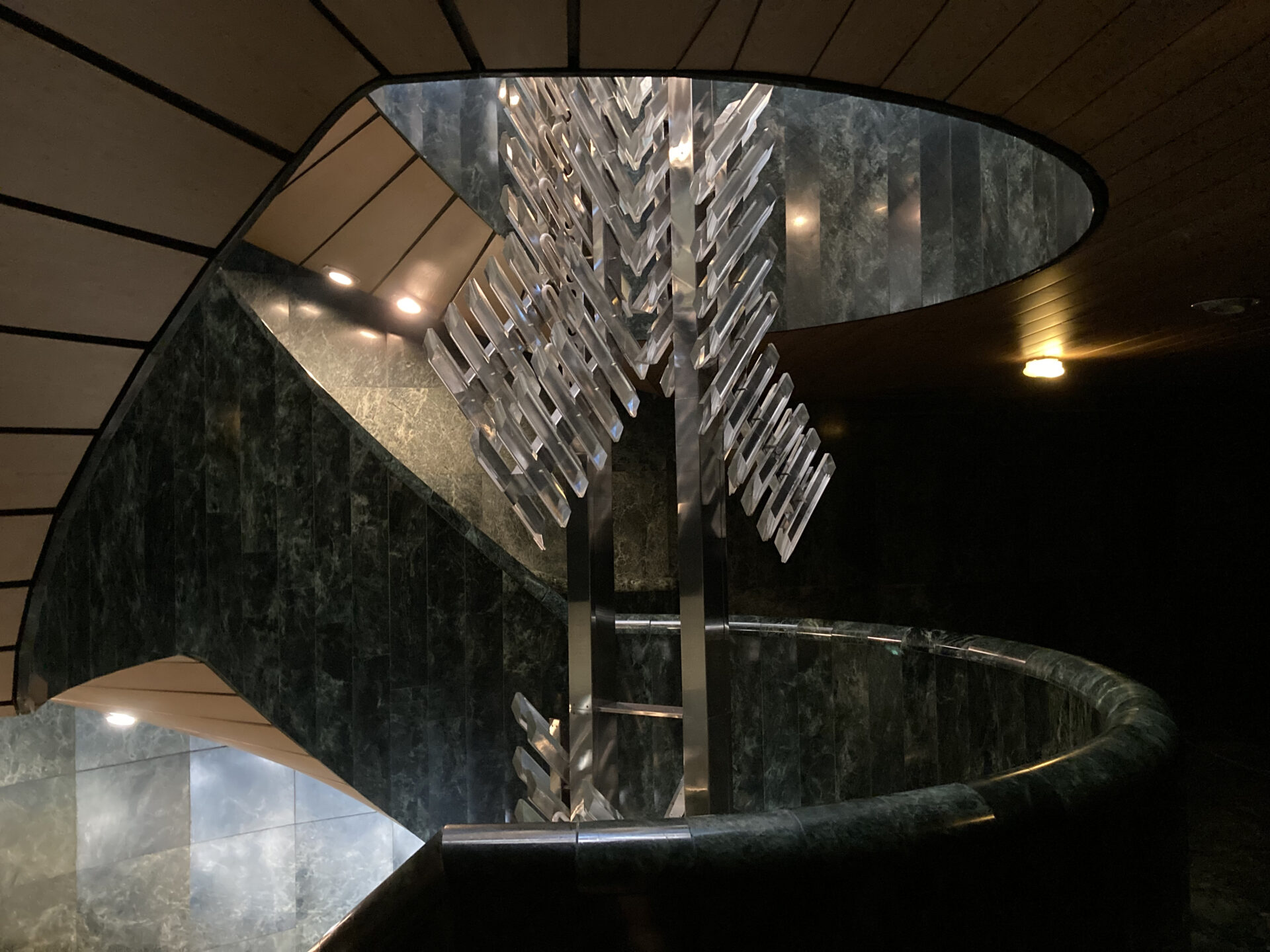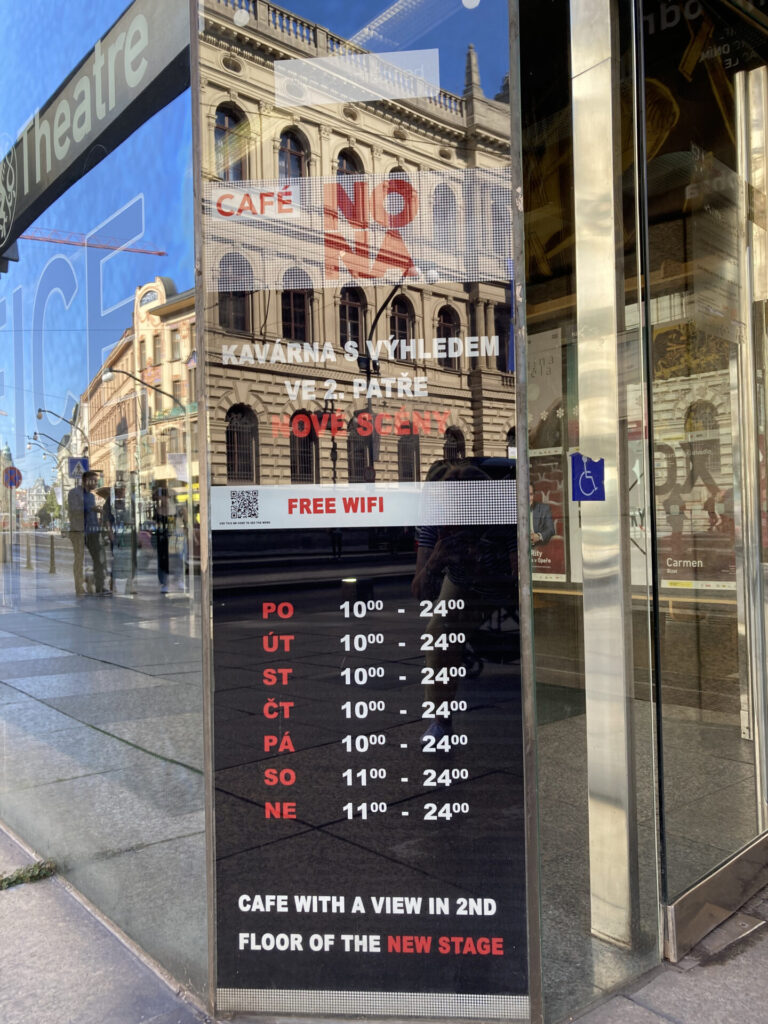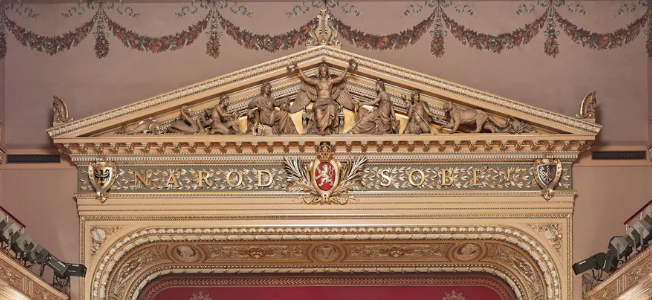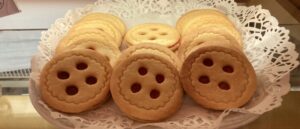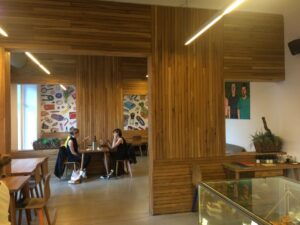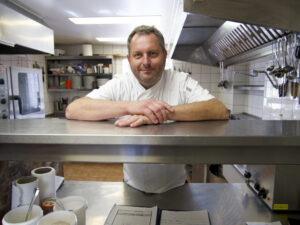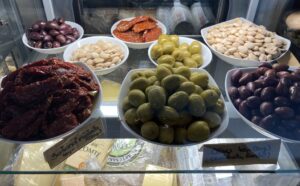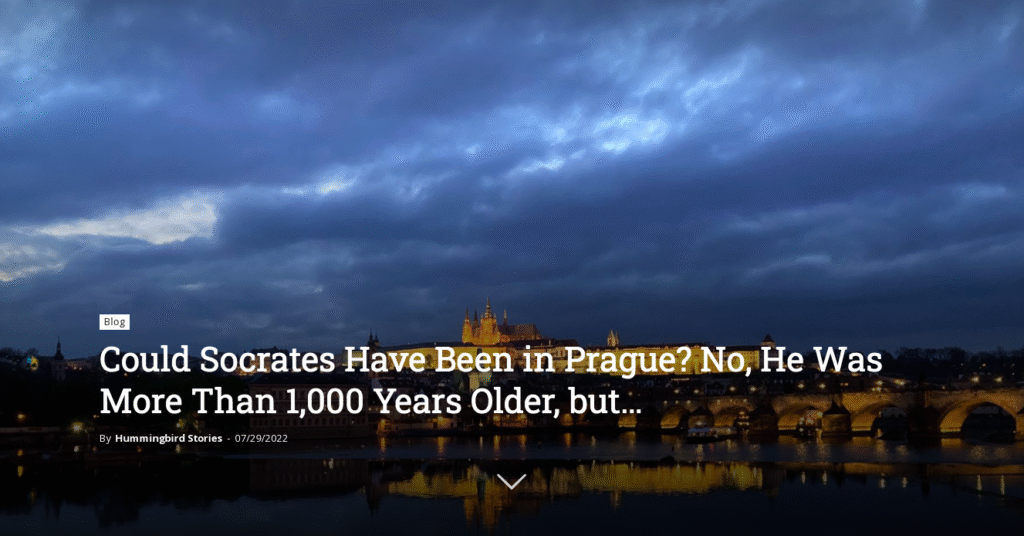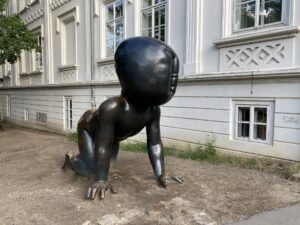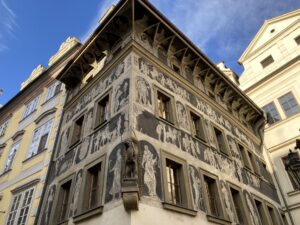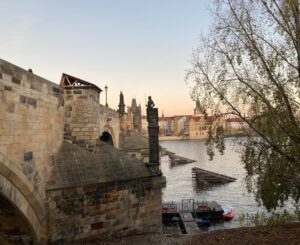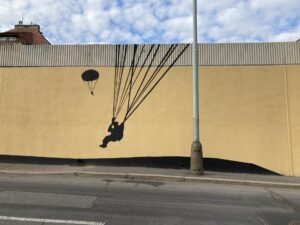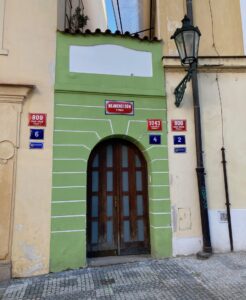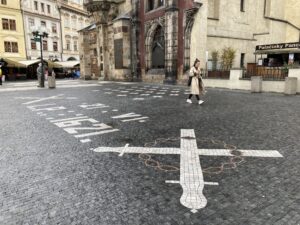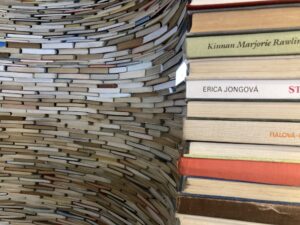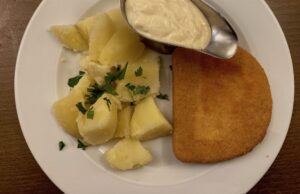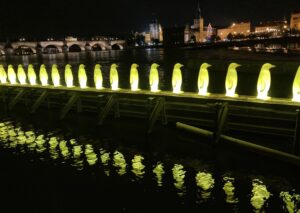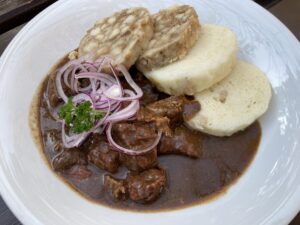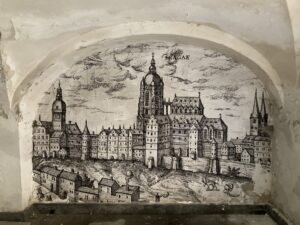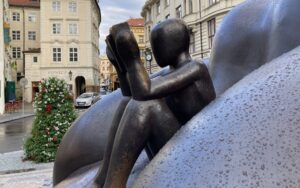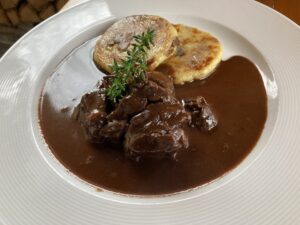If you walk down Národní Street and pass by the New Stage (one of the buildings belonging to the National Theater), you might notice a small sign inviting you to the café on the theater’s second floor. That cafe is called Nona, a very strange name that is rarely found in Czech.
(By itself, the word means nothing, and if we look at the frequency of surnames, only three residents in the Czech Republic have this surname; they all live not far from Prague, in the city of Kladno – and it can certainly be expected that they are members of the same family. )
The word Nona originated very simply. Since the cafe is located in the New Stage building (in Czech: NOvá scéNA), the cafe’s name is composed of the first and last syllables of the theater’s name. The fact that the cafe is located in one of the buildings of the National Theater has one positive and one negative consequence. It has become a favorite cafe of artists, students, and intellectuals – and is closed during the summer theater holidays. (It is a Czech tradition that theaters have the same holidays as school children, i.e., July and August. This had been true until 1989. Since then, the Czech theater scene has changed a lot, and most theaters play at least part of the summer on outdoor stages – for theater lovers, this means that nowadays they hardly notice theater holidays anymore.)
If you want to know more about the construction of the New Stage building, read here: Do You Want To Visit the Sauna and the Opera at the Same Time? And if not, come and have a look with us. It is a building that is definitely worth a visit. (And the cafe is open until midnight.)

The dominant feature of the green “marble” staircase, i.e., serpentinite, is a luminous glass sculpture by Pavel Hlava and Jaroslav Štursa.
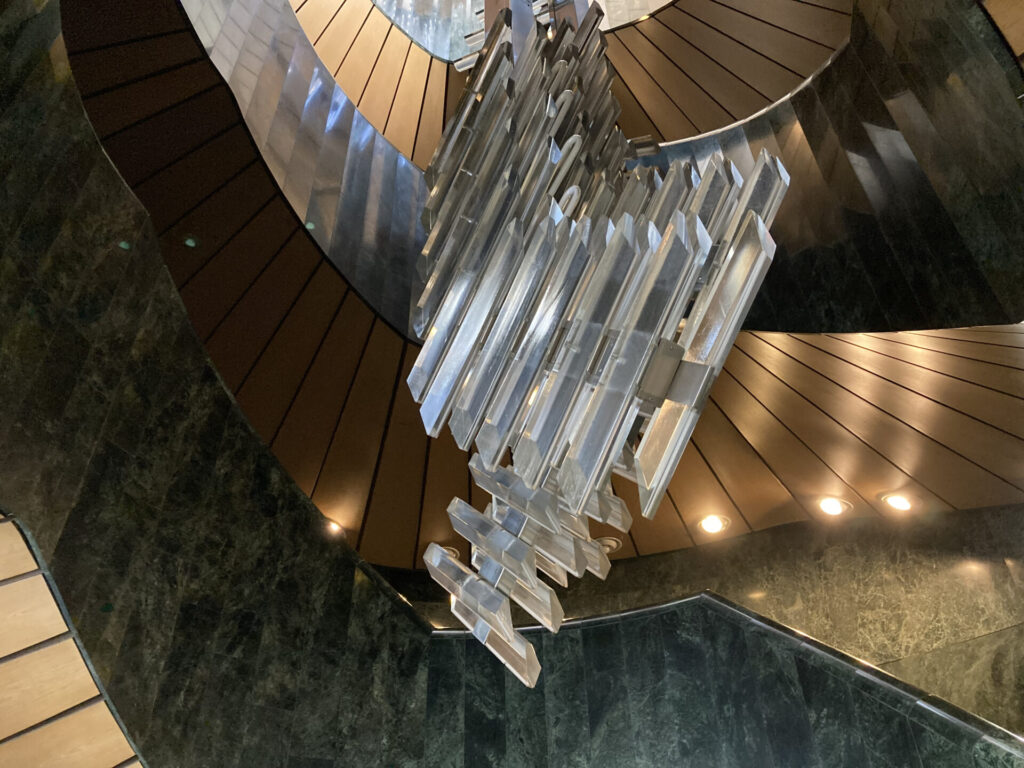
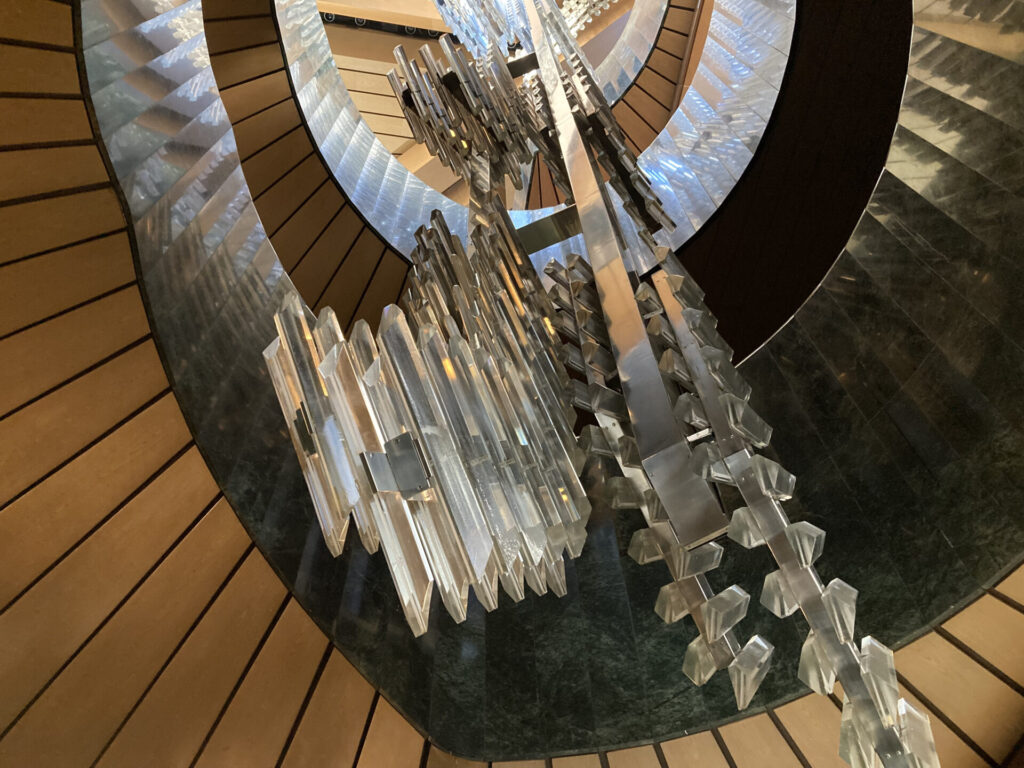
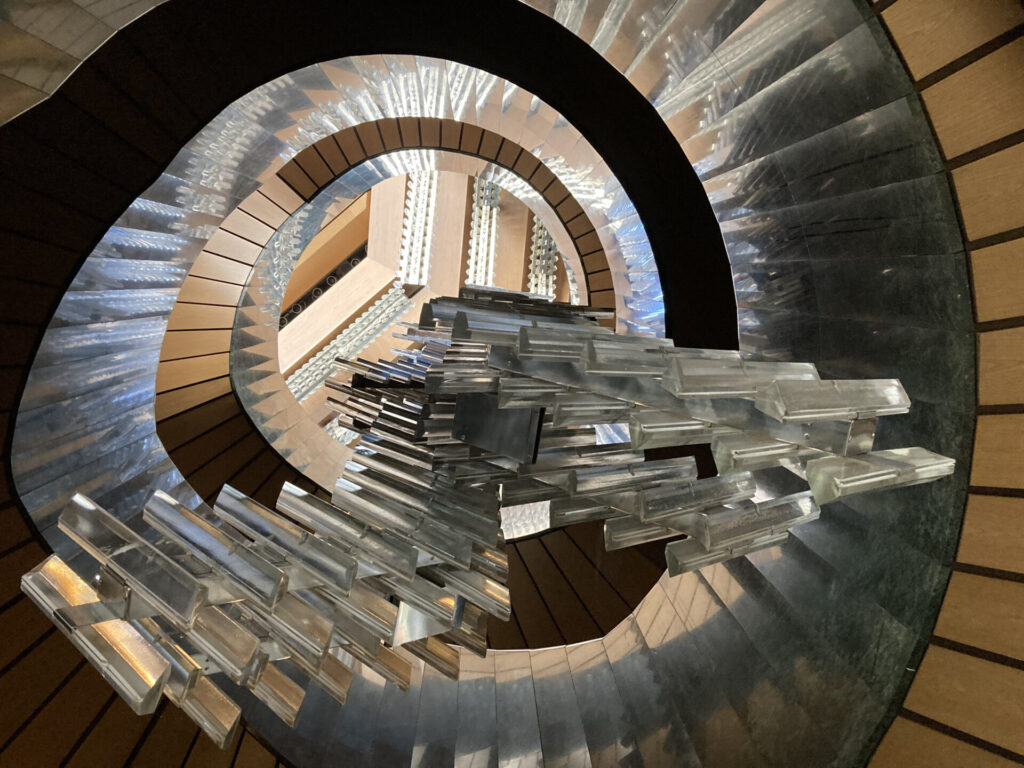
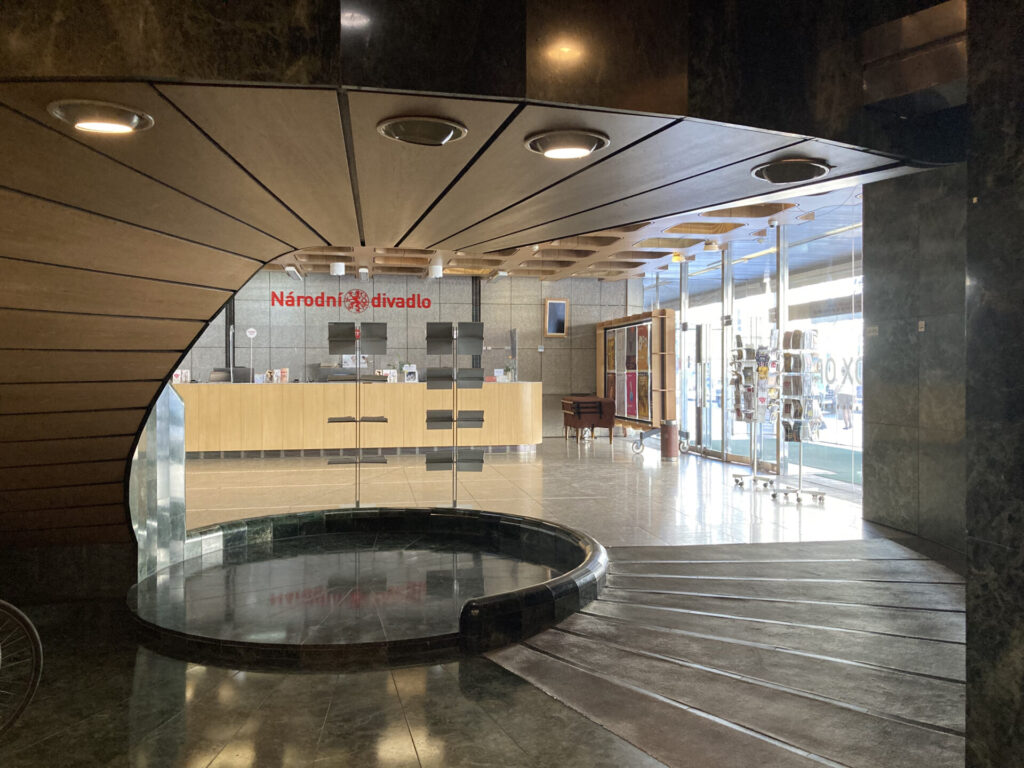
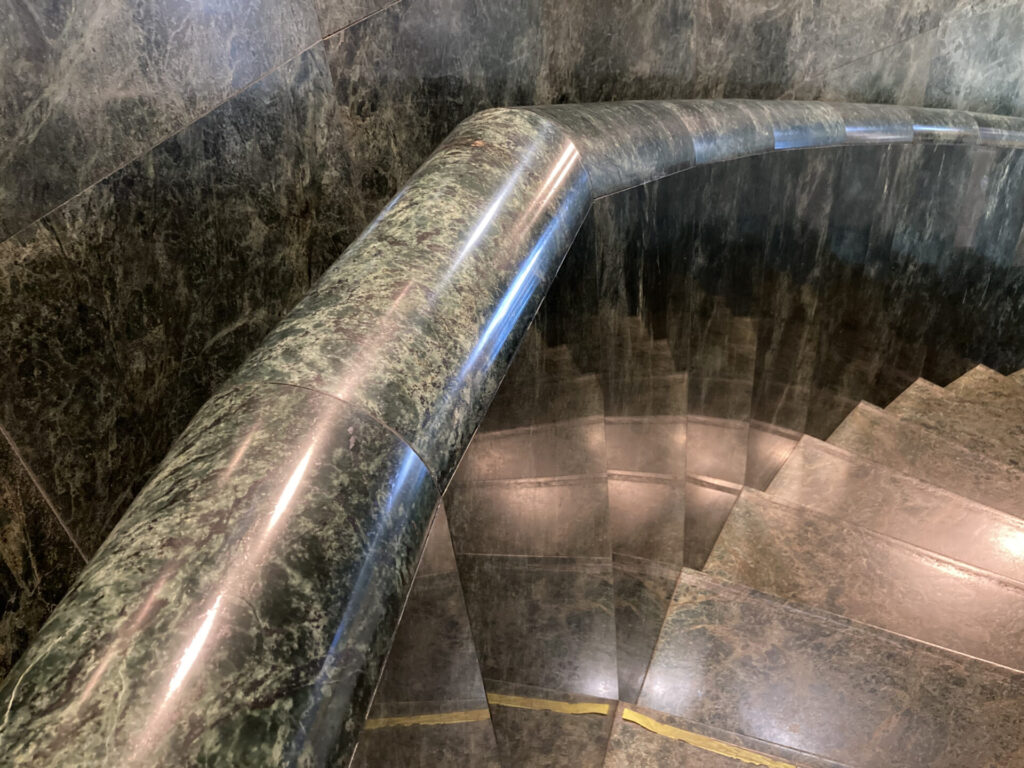
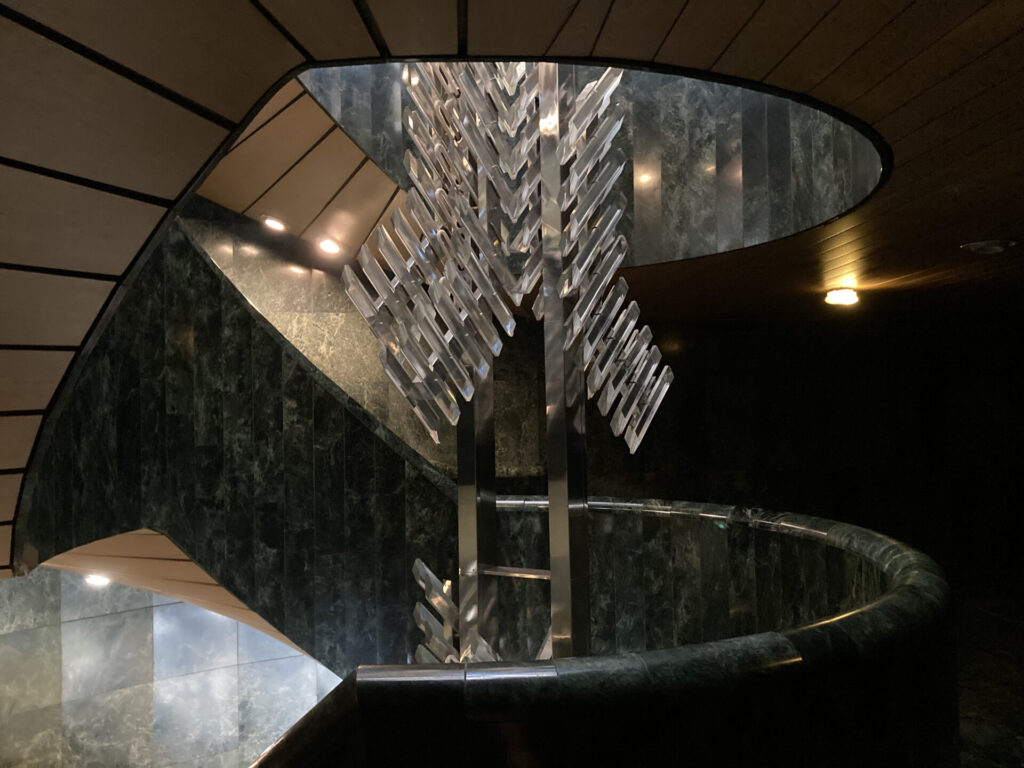
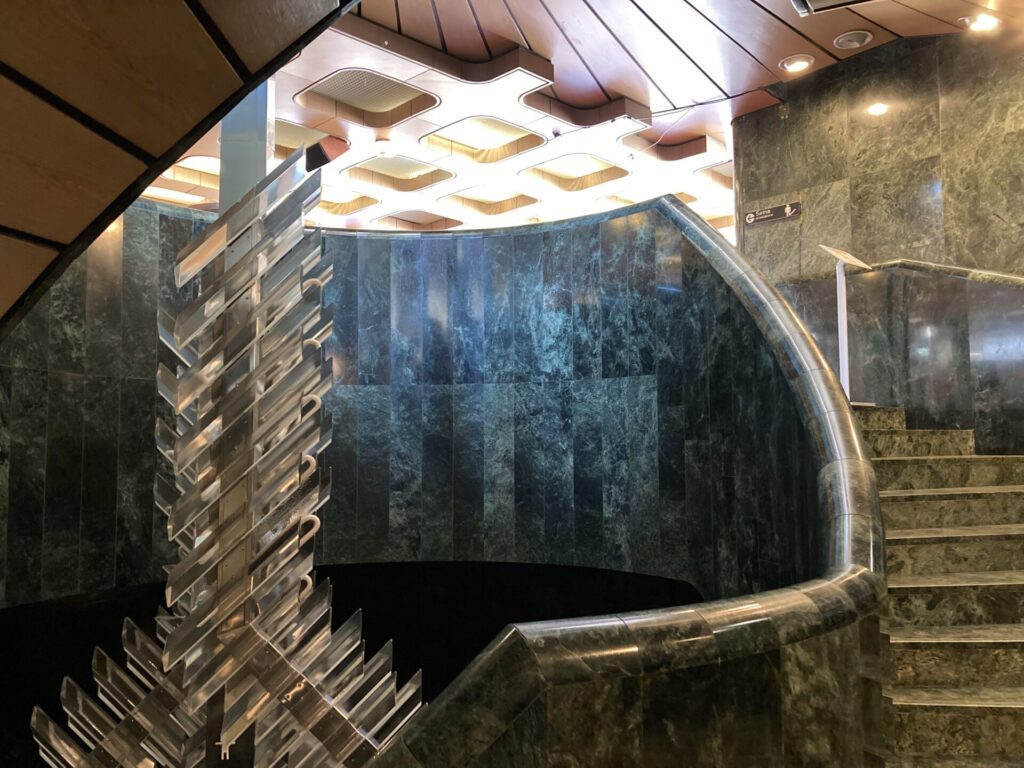
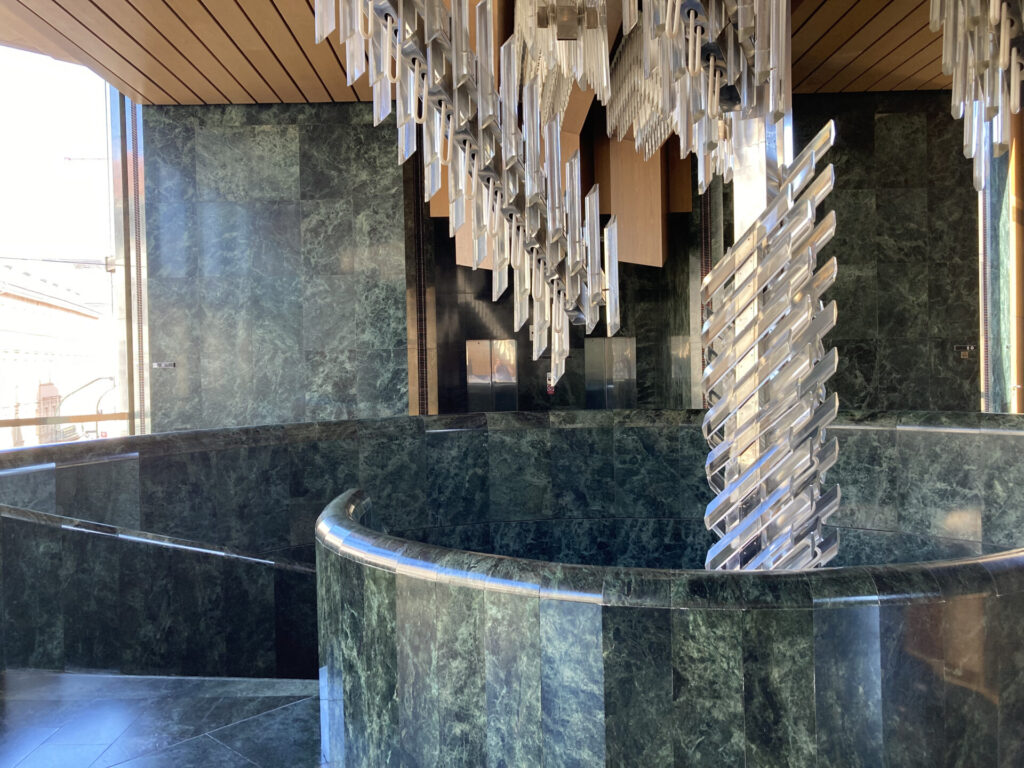
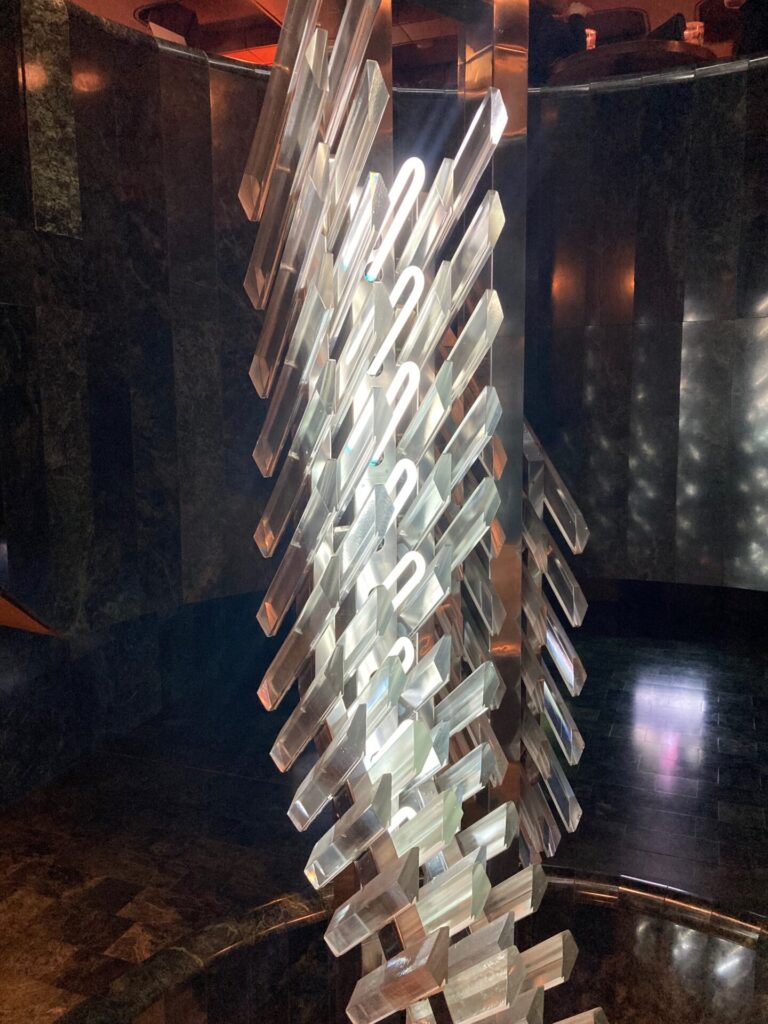
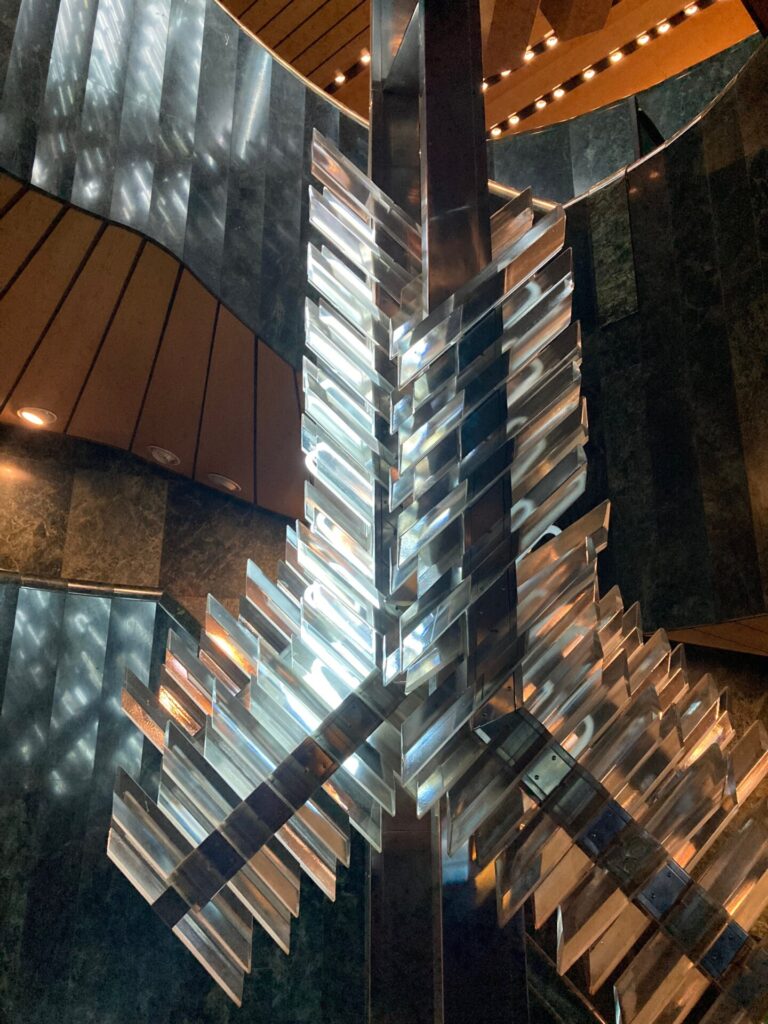
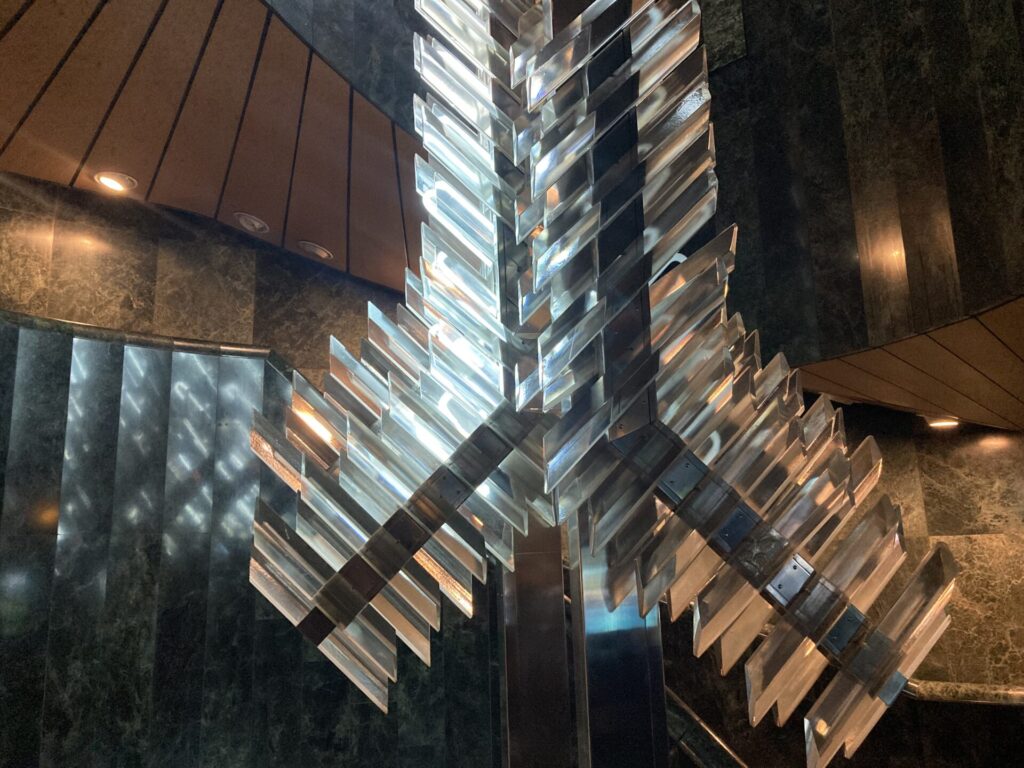
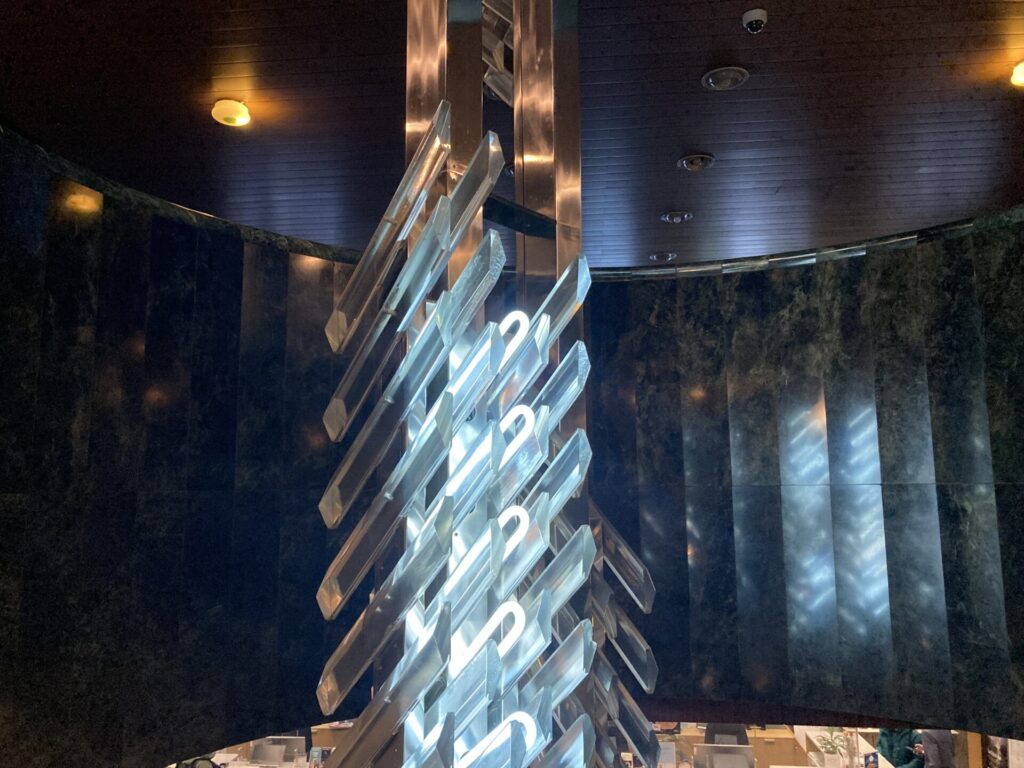
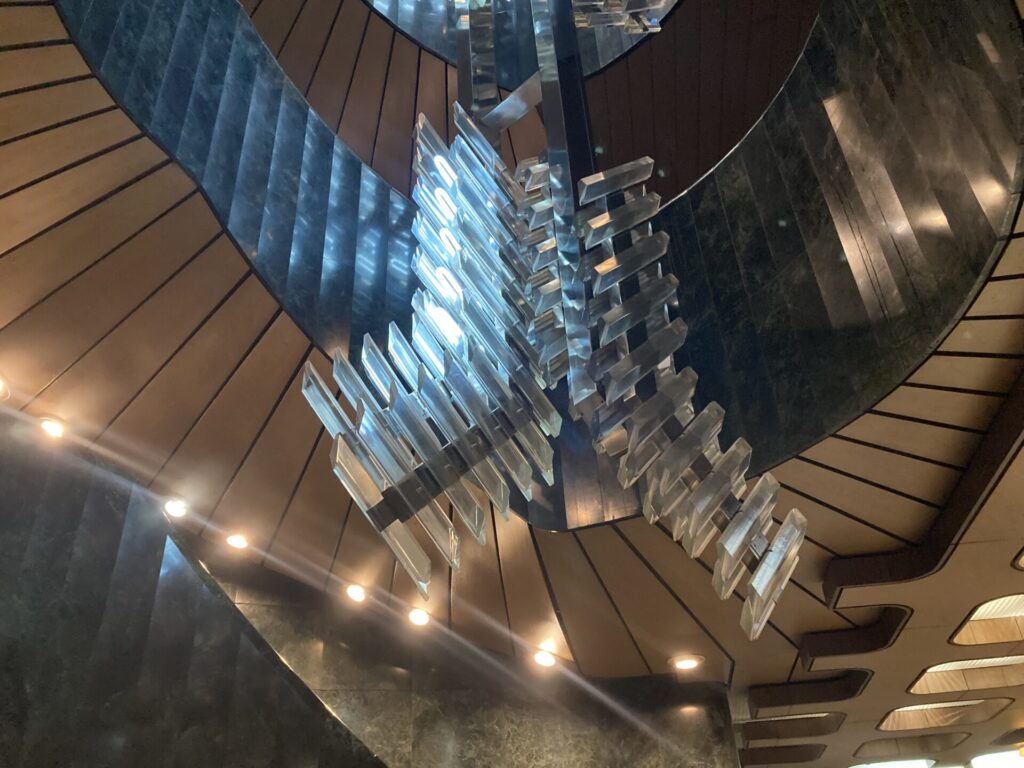
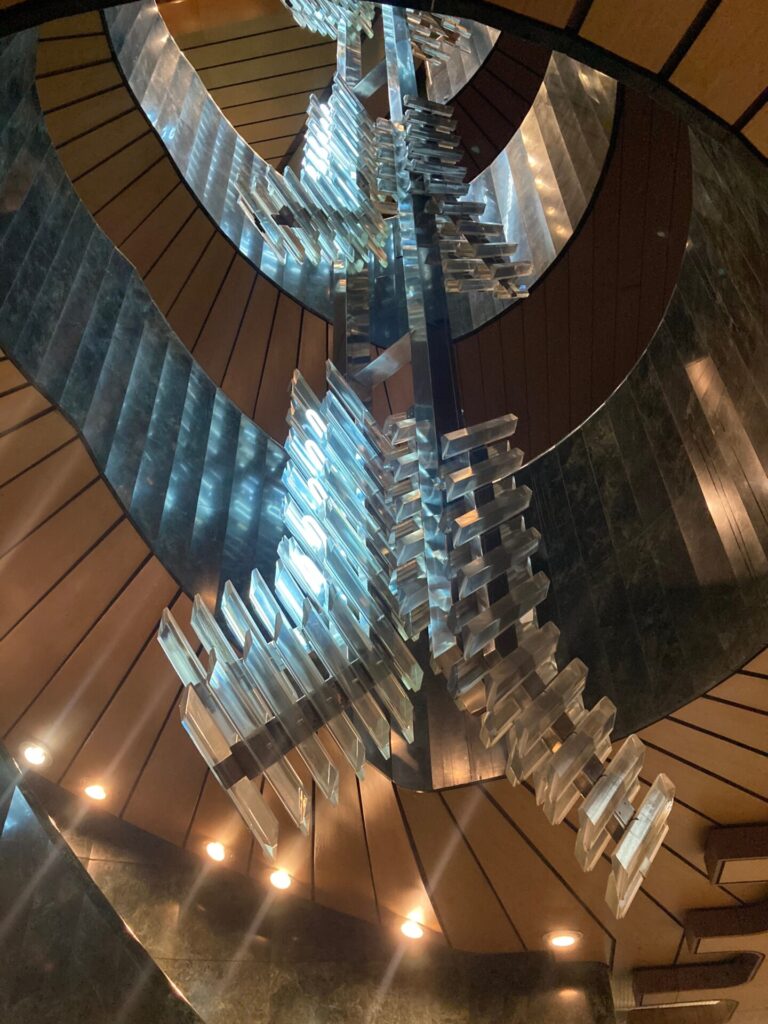
At the time of the opening of the New Stage (1983), there was only a dressing room and a lot of free space. It’s a cafe today, but you still perceive the art very intensely. The comfortable chairs invite you to sit down, but be careful – they are wooden.
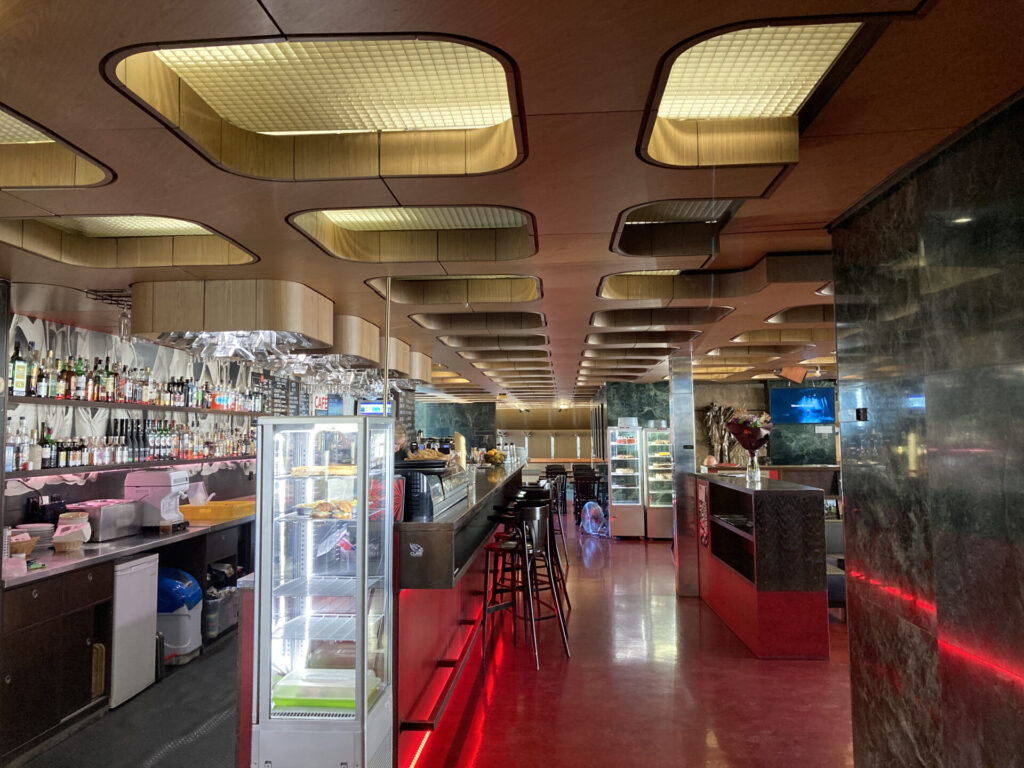
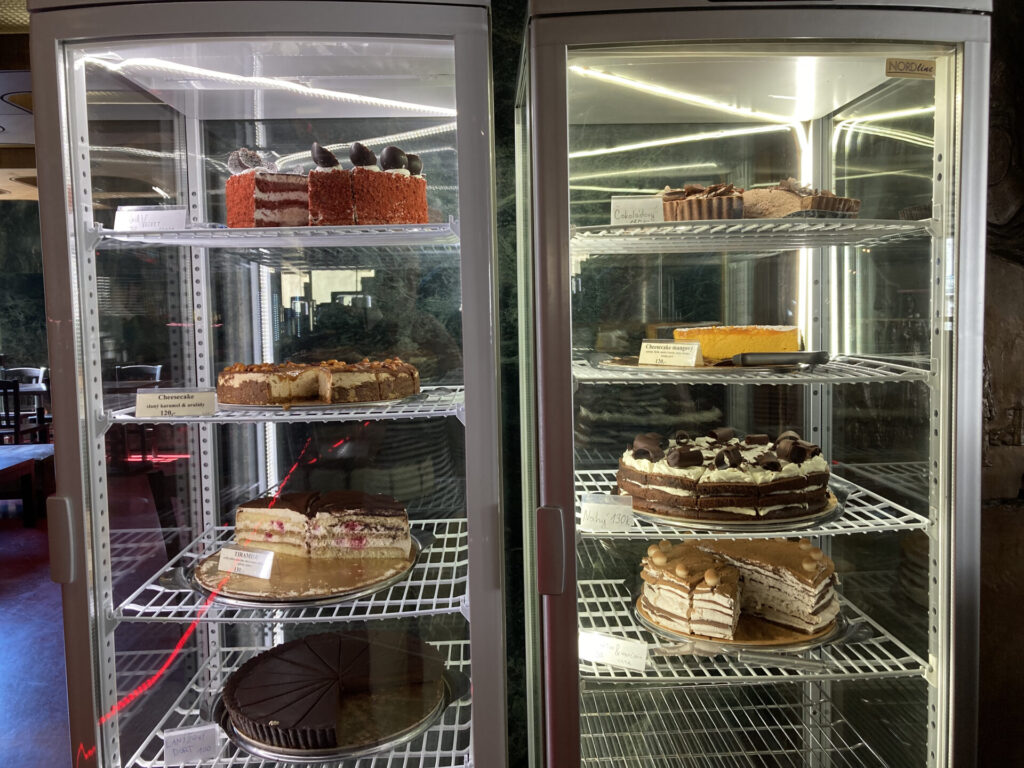
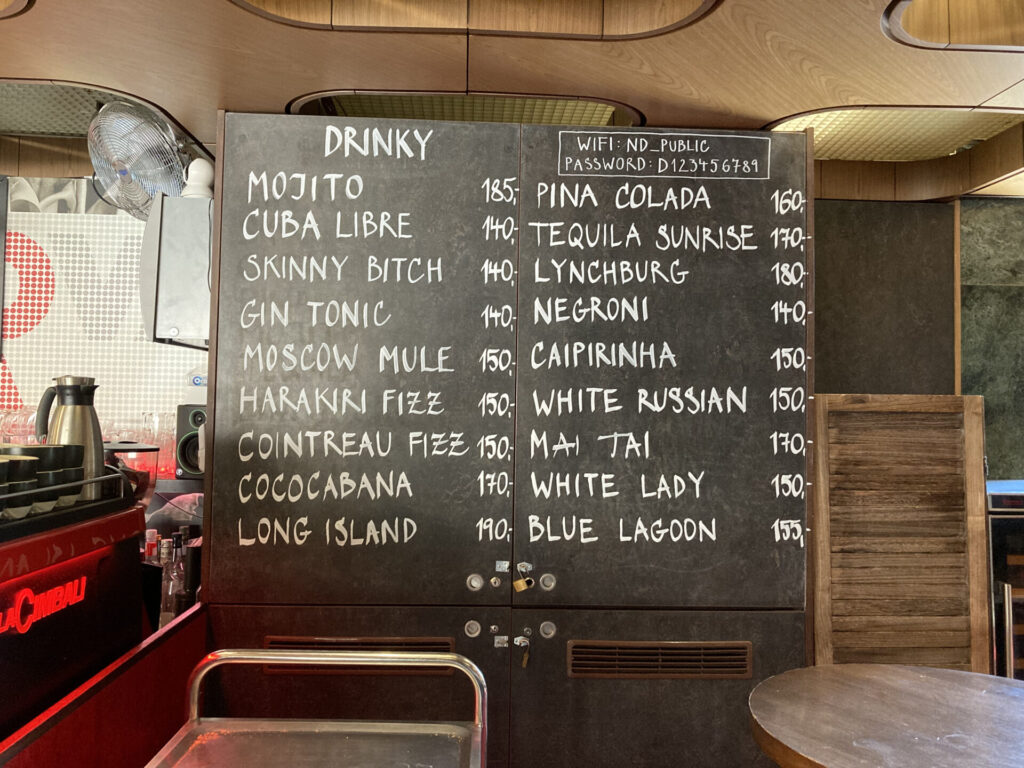
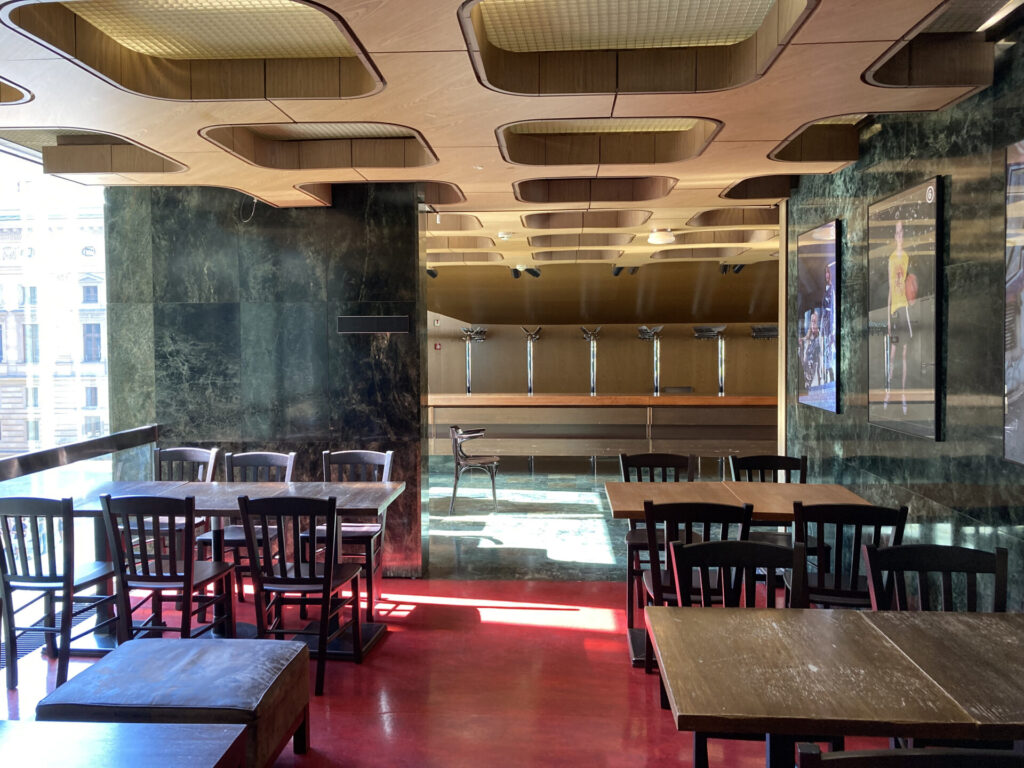
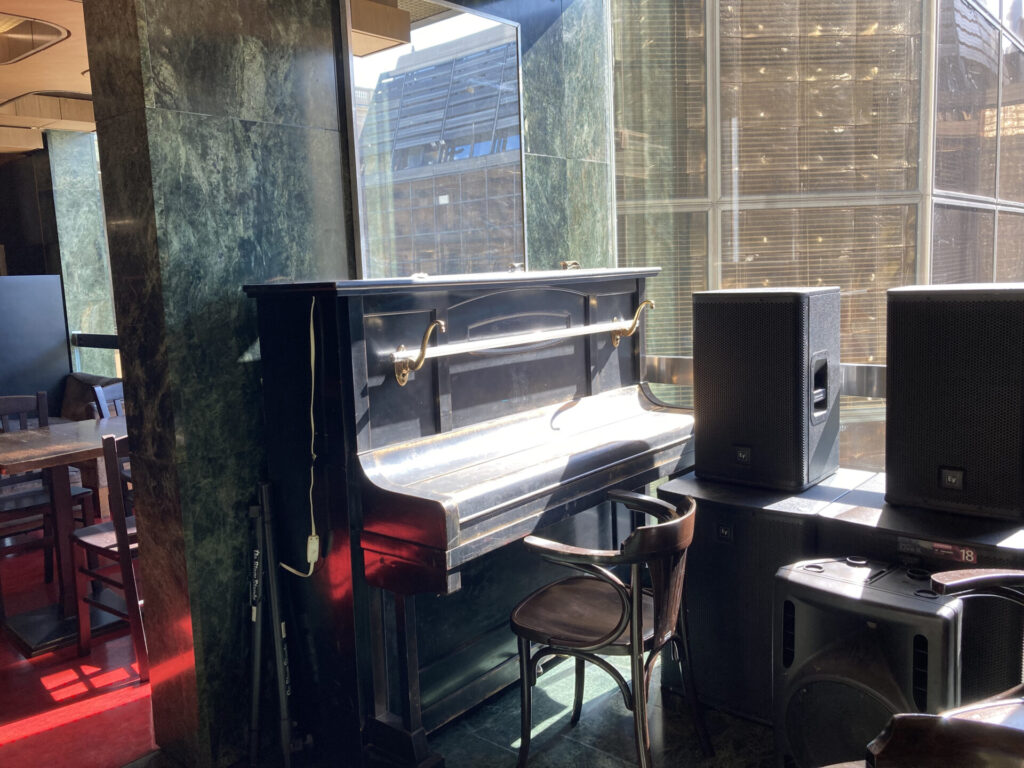
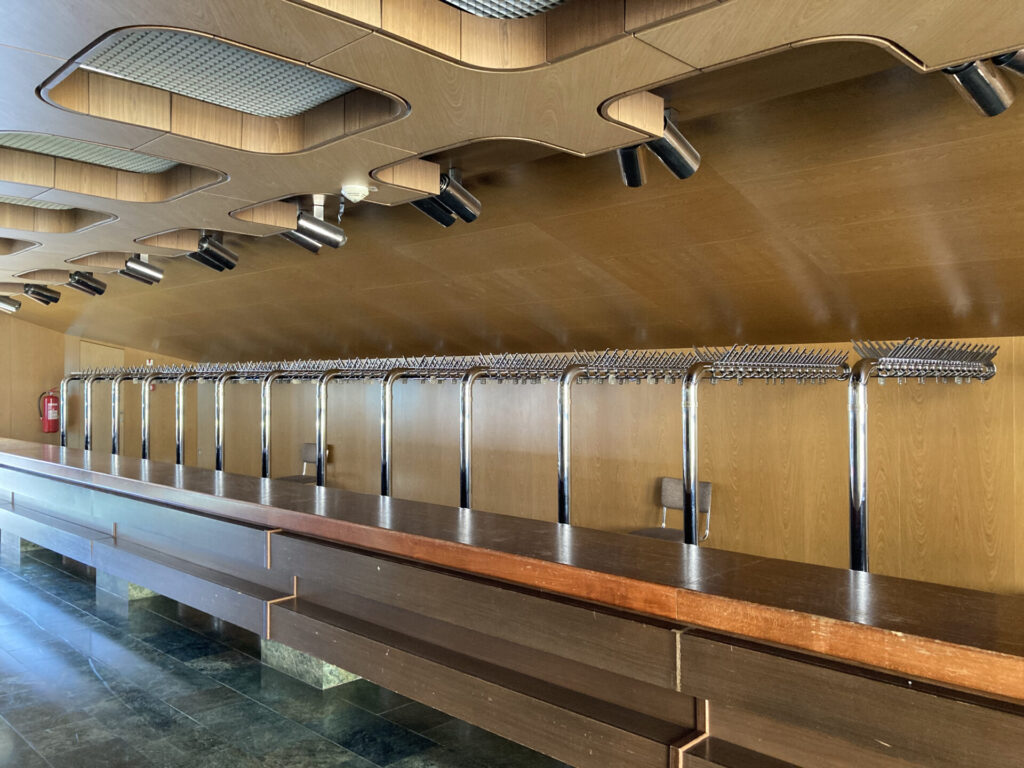
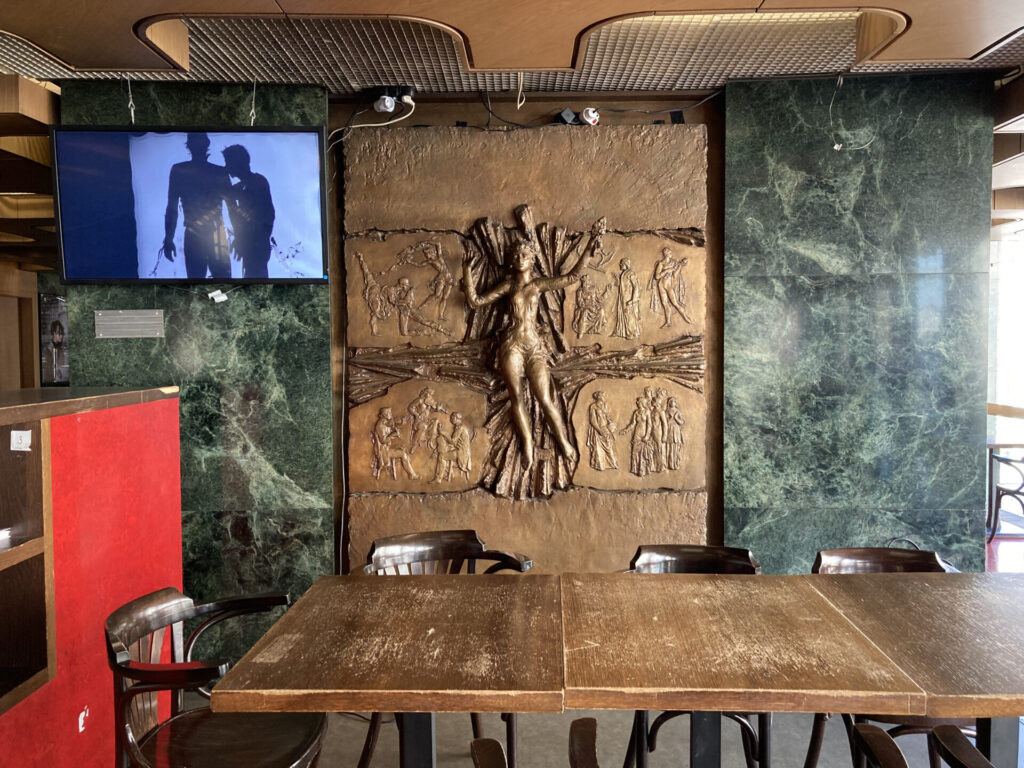
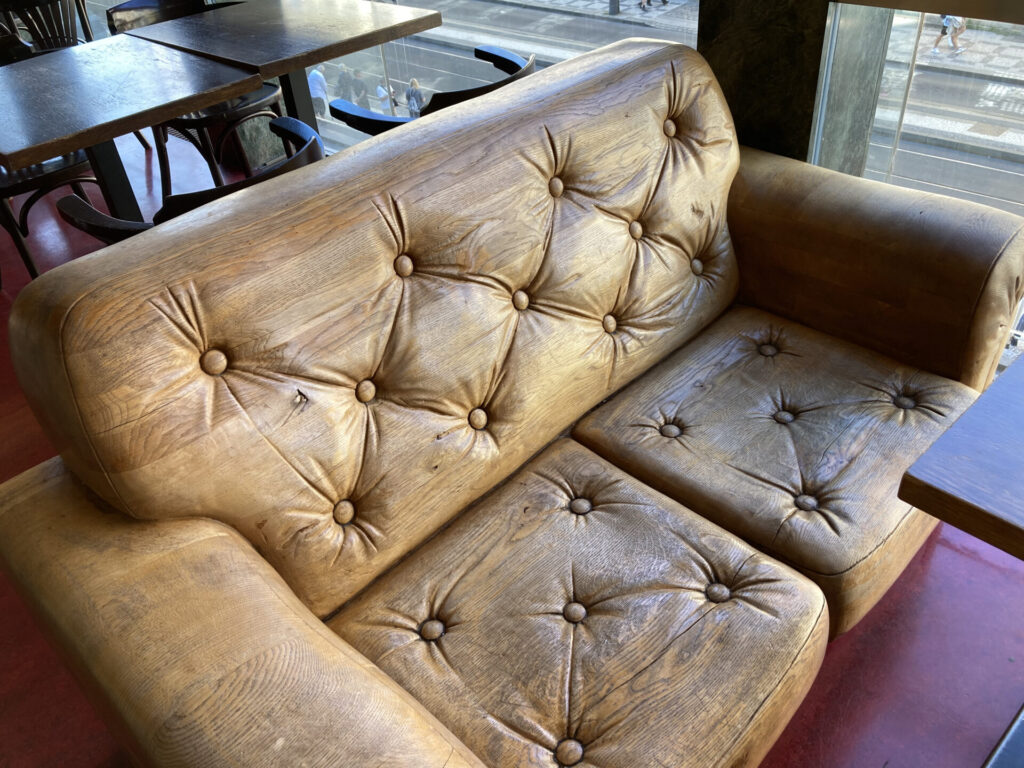
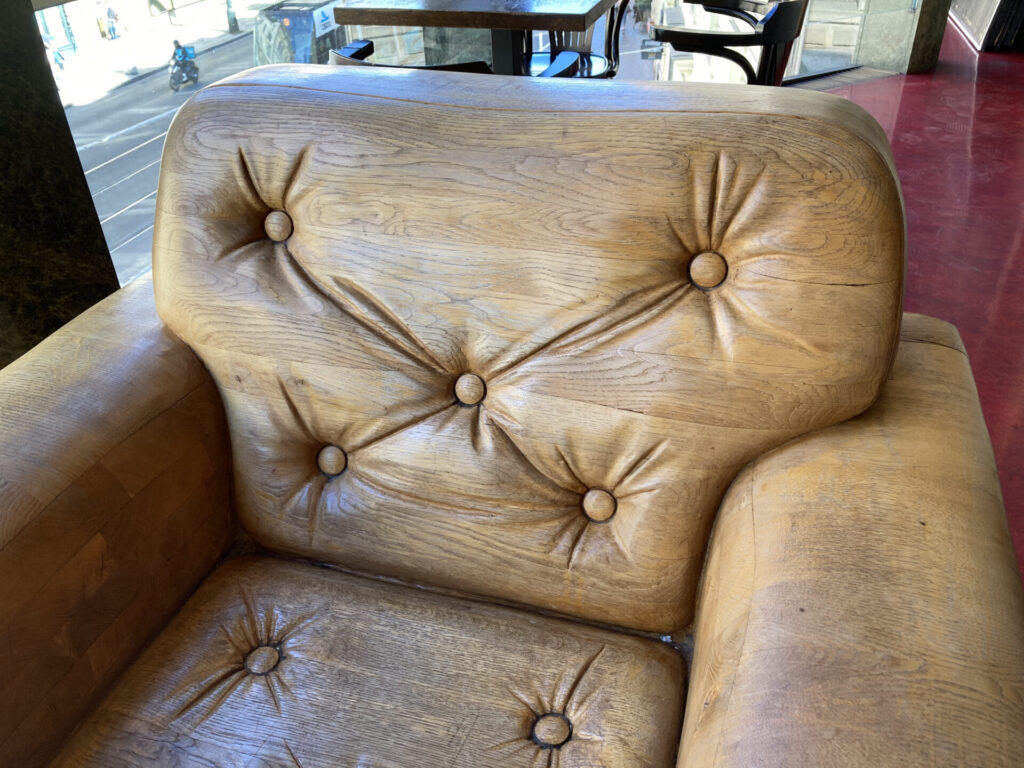
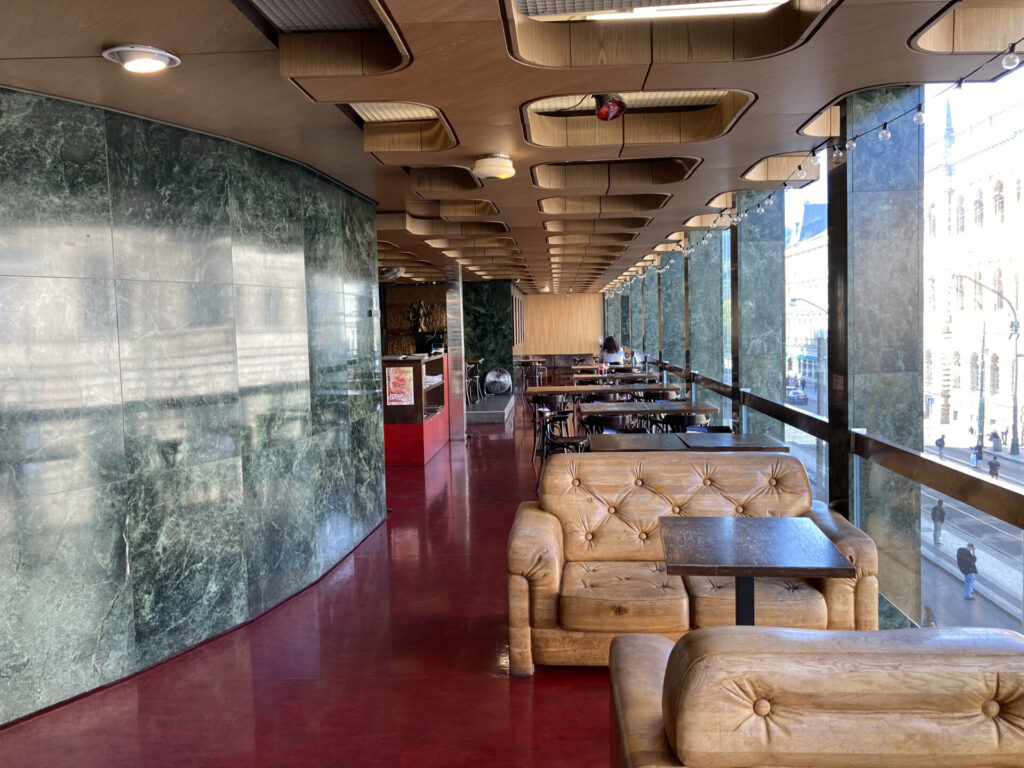
The first performance on the stage of the New Stage took place in November 1983, 100 years and two days after the reopening of the National Theater. It was first performed in the historic building in June 1881, then the theater burned down in August. In record time, money was raised in the national collection for its restoration, and the performances actually began in November 1883.
Because people contributed even minimal amounts to this restoration of the historic building of the National Theater, the inscription the Nation for Itself (NÁROD SOBĚ) is above the stage of the National Theater.
Cafe Nona is one of the inconspicuous places that tourists tend to miss. However, to those who know it, the cafe offers a pleasant environment imbued with art and beautiful views. On Národní Street, there’s also the piazzetta of the National Theater (today Václav Havel Square) and the garden of St. Voršila Elementary School.
The last two photos are from the floor above the cafe where the foyer of the theater hall is. Slovak designer Viliam Chlebo is the author of the armchairs, which were chosen directly by the architect Karel Prager for the New Stage building. His T2407 armchair has won many awards for its outstanding design. Two hundred fifty of them were produced just for the New Stage. Their admirers will surely be pleased that today, they can buy a replica of such an armchair, albeit at a relatively high price, which also reflects the artistic value of the armchair.
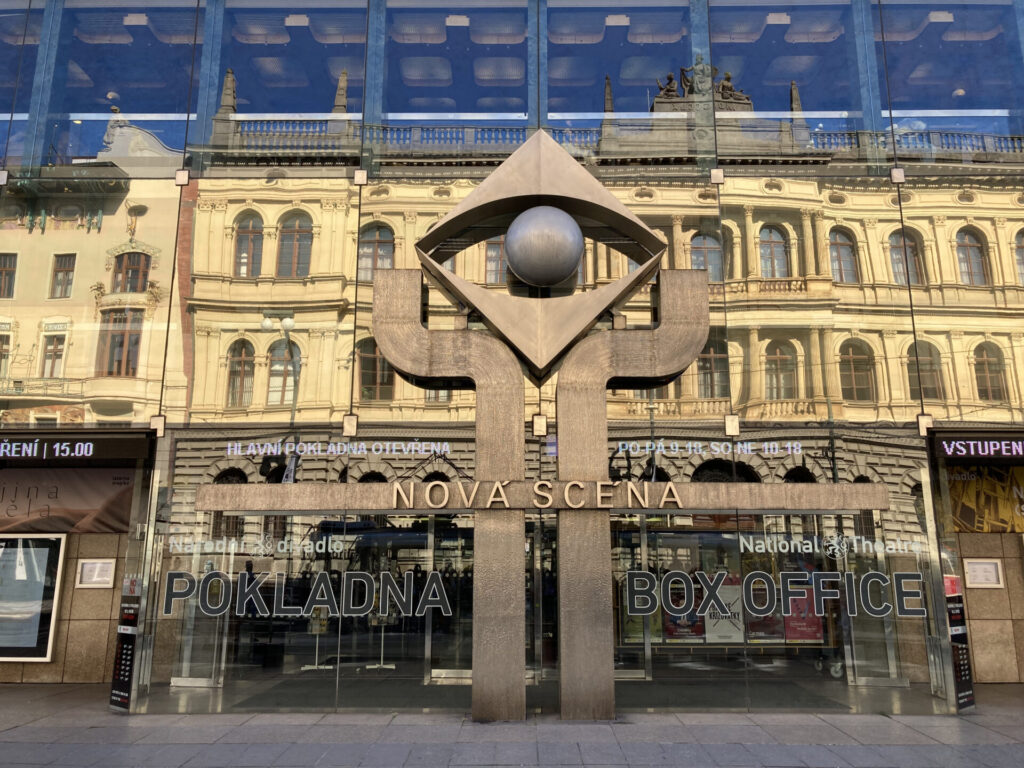
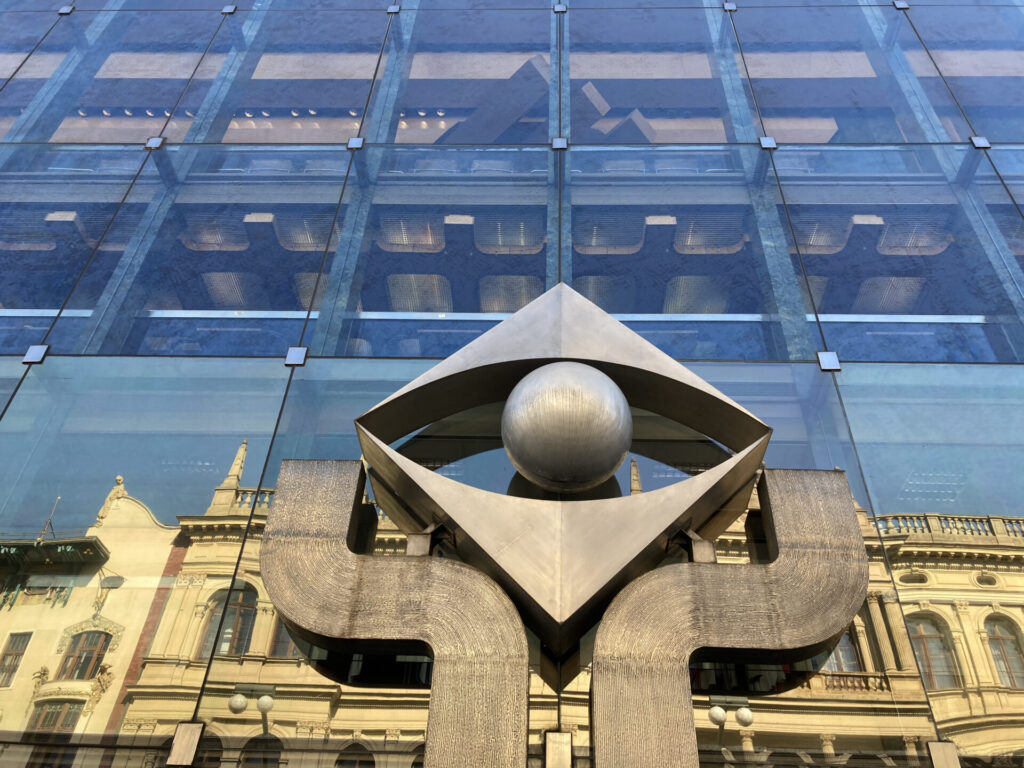
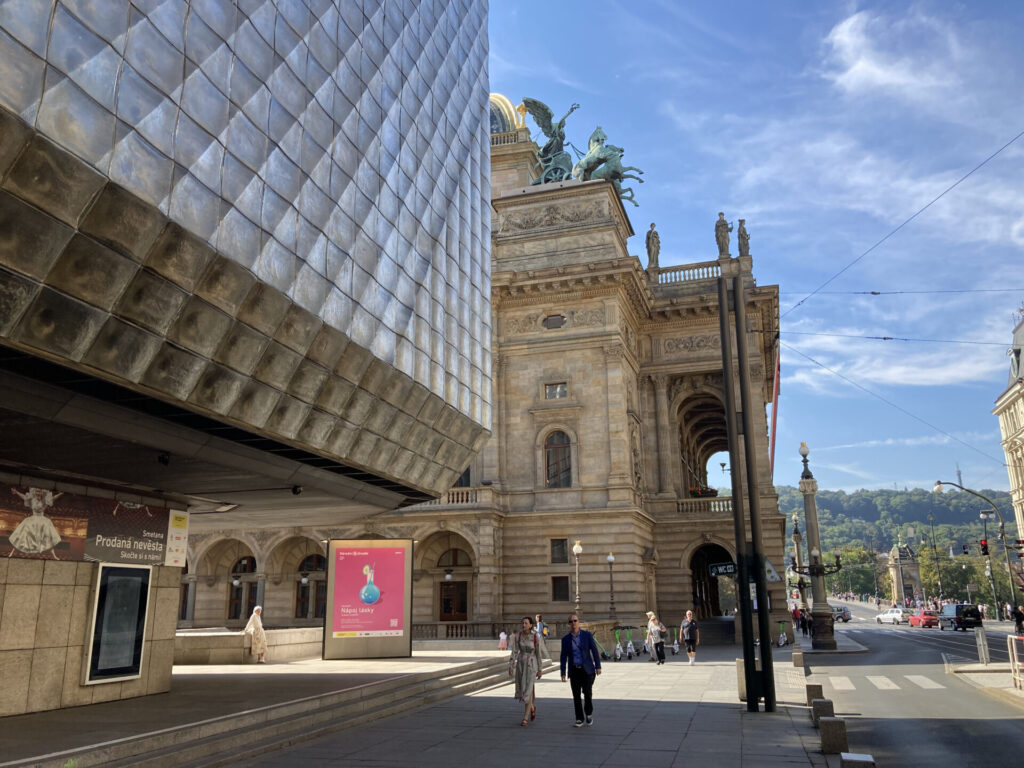
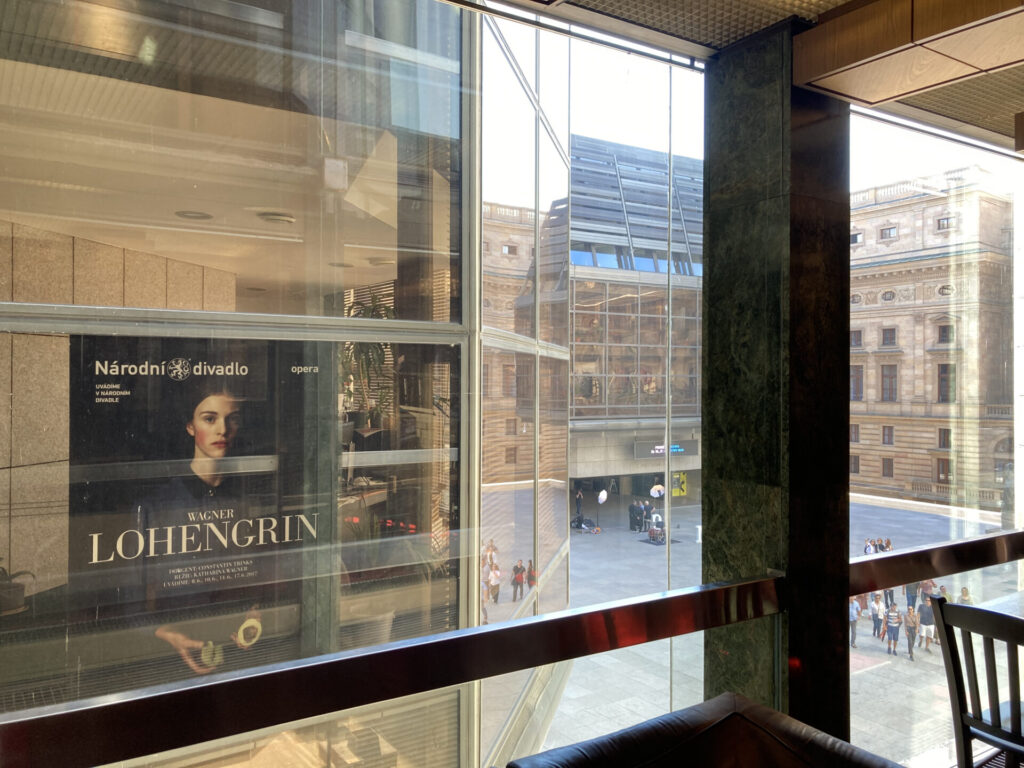
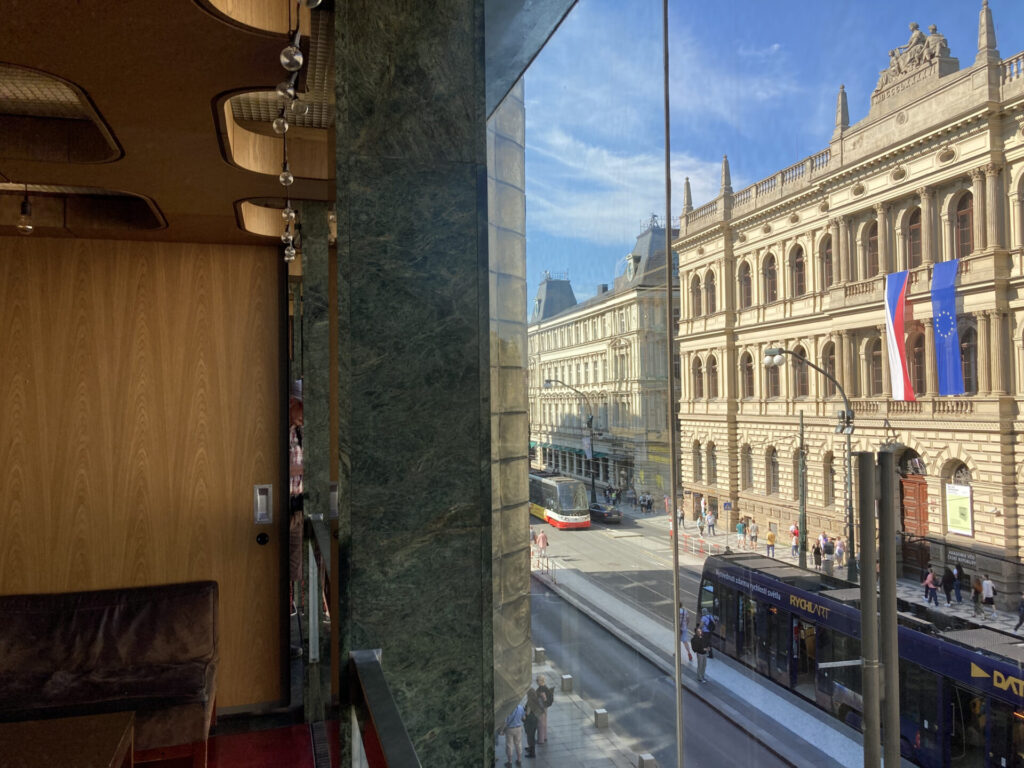
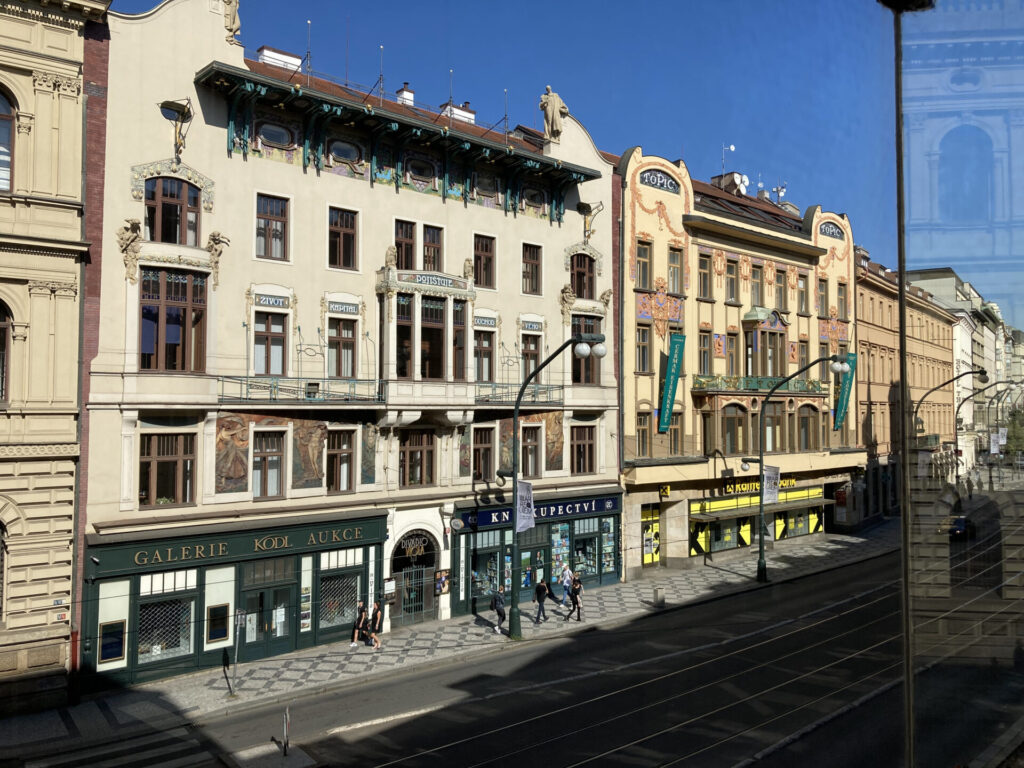
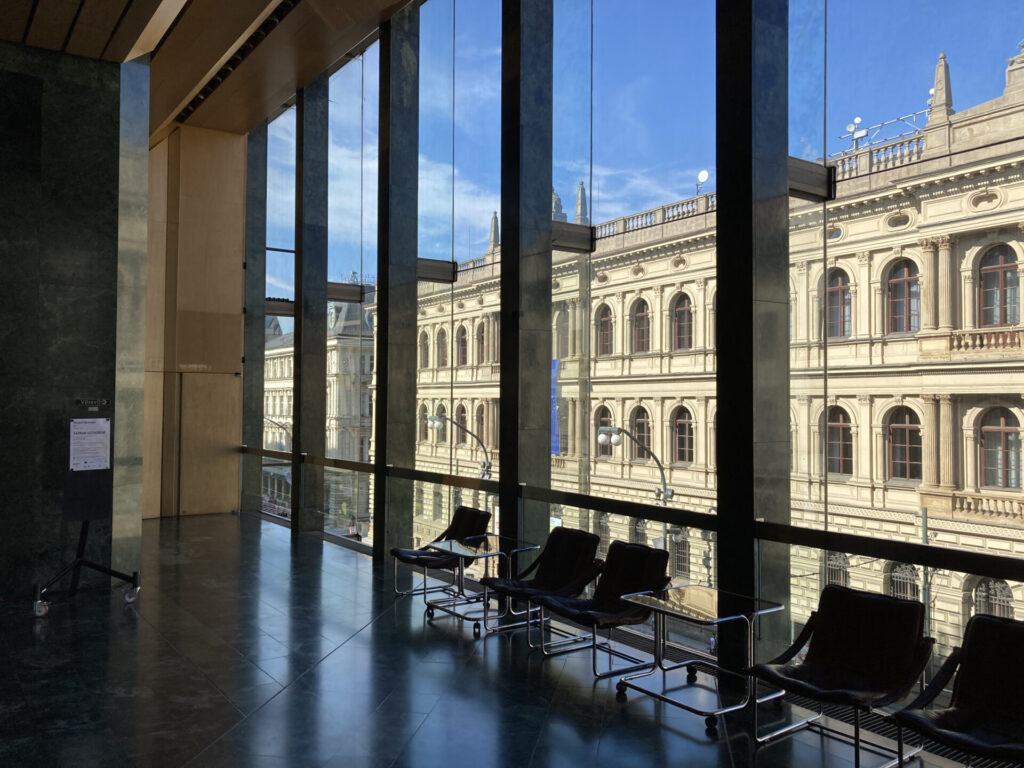
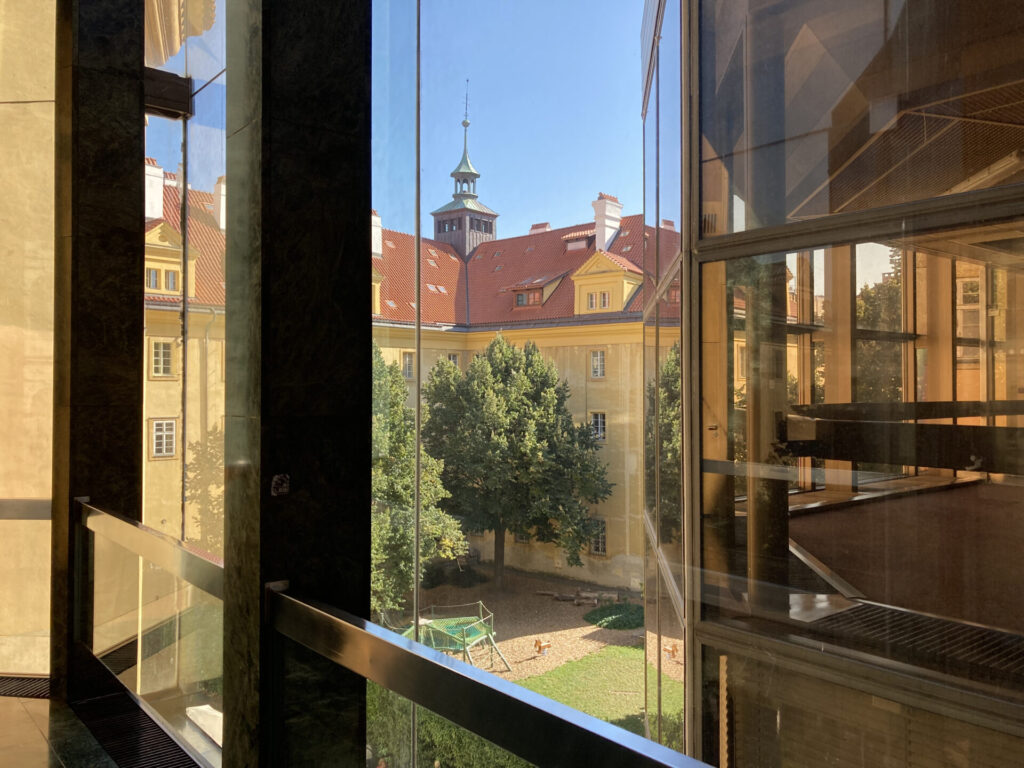
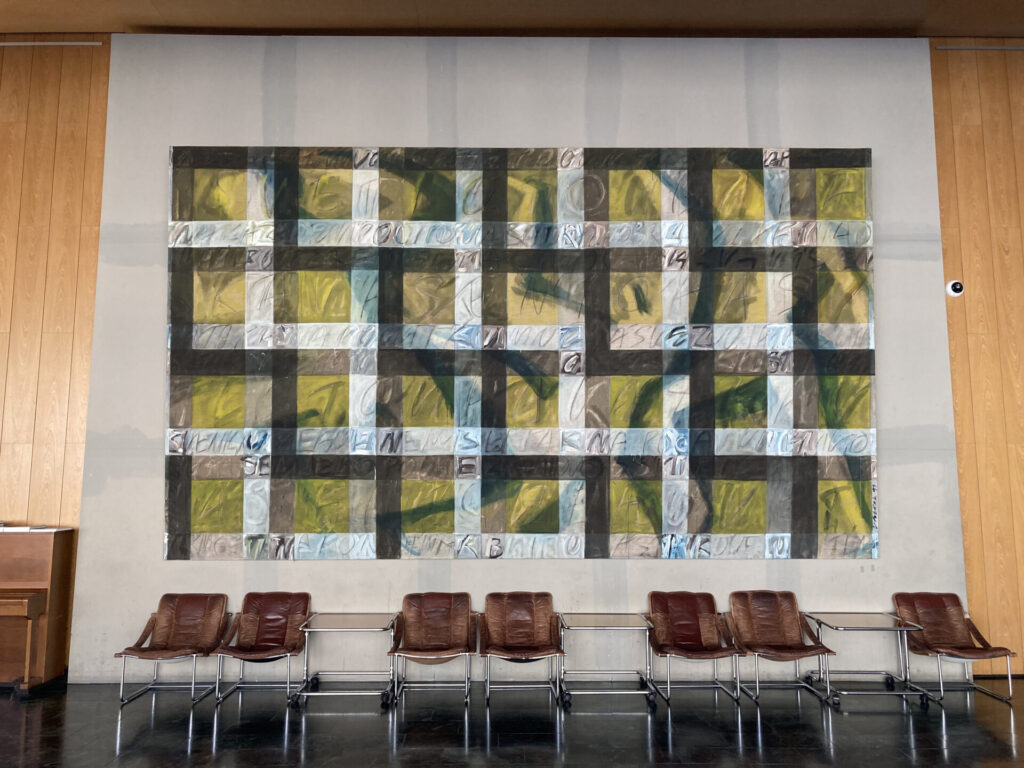
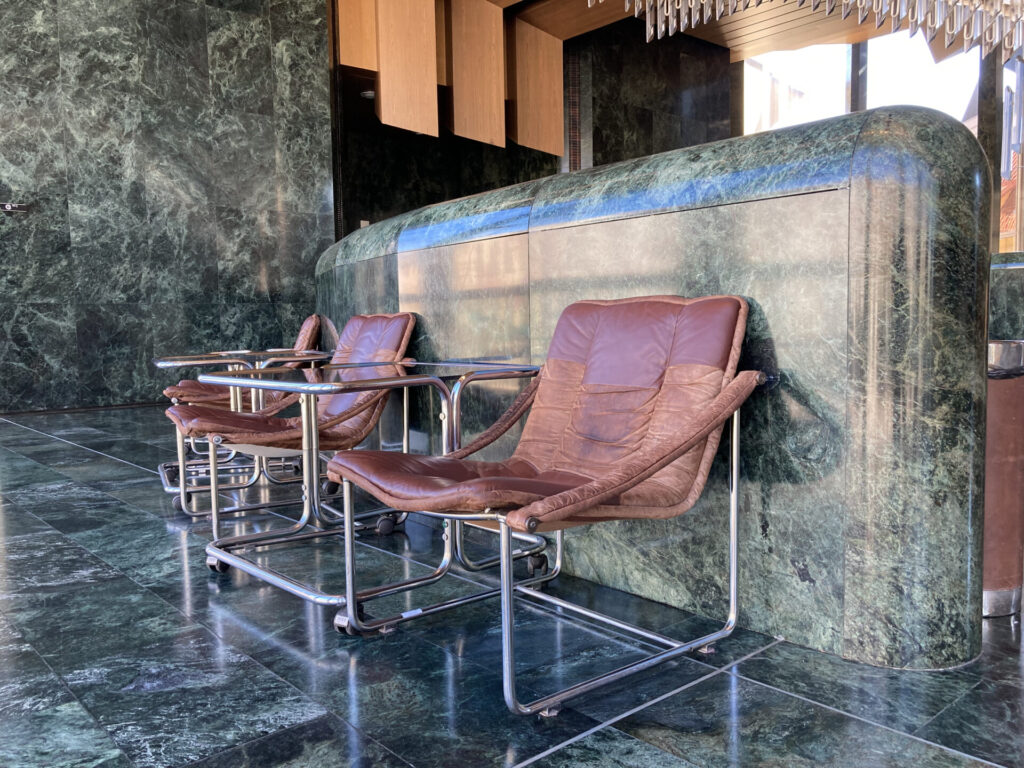
The historic building of the National Theater and its New Stage. Between them is a piazzetta, today Václav Havel Square. The last photo is from when the New Stage was being built.
